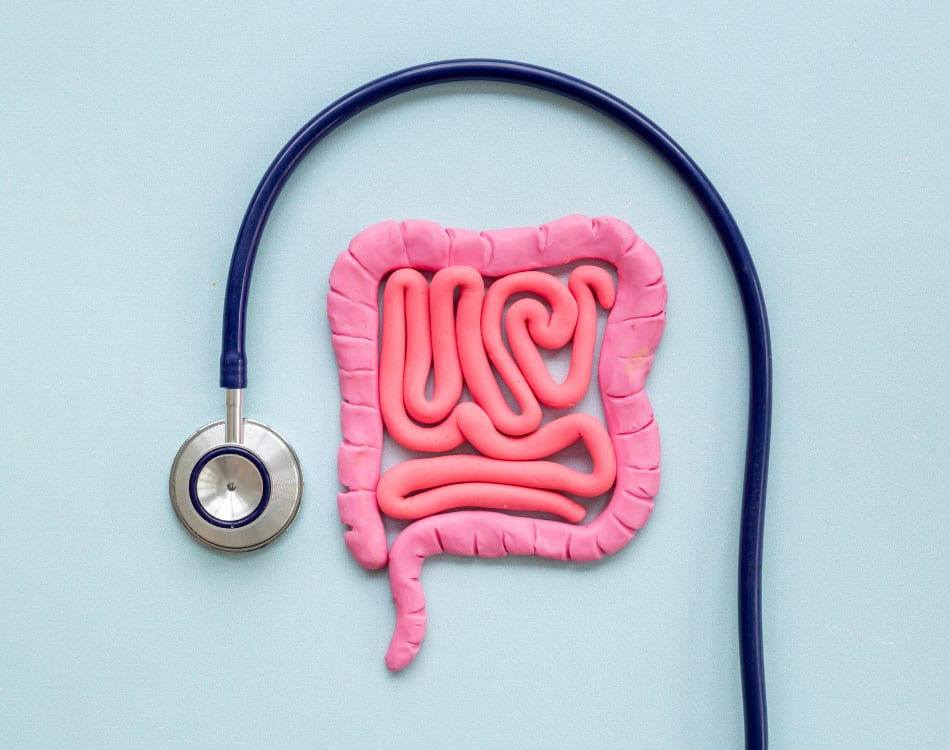Cases of type 2 diabetes are on the rise worldwide, despite that fact that it is a preventable lifestyle disease.
The 2021 International Diabetes Federation (IDF) Diabetes Atlas1 reports that 10.5% of people aged 20-79 suffer from diabetes globally, with over 90% suffering from type 2 diabetes.
More worryingly, almost half are unaware that they are living with the condition, with its prevalence rising more rapidly in low- and middle-income countries2.
In South Africa, 2019 estimates suggest that 4.58 million people aged 20–79 live with diabetes, with more than half (52.4%) undiagnosed3.
And the epidemic looks set to worsen, with the IDF estimating that 1 in 8 adults – approximately 783 million – will live with diabetes by 2045, an increase of 46%1.
Despite the bleak outlook, it is possible to reduce the prevalence and impact of diabetes by taking proactive and preventive measures.
READ MORE | UK Study Finds Type 2 Diabetes Reduces Life Expectancy Of Women, Younger People, Smokers
How type 2 diabetes develops
The disease is becoming more common, even among children due to changes in our modern lifestyles, which are characterised by less activity and more processed, refined and sugar-laden foods and beverages.
Type 2 diabetes is a condition caused by the body’s inability to regulate blood sugar levels. When we consume foods or drinks with a high sugar content, blood glucose levels rise rapidly, triggering a surge in insulin production from beta cells in the pancreas.
Insulin regulates this rise in blood sugar by transporting glucose into cells to lower circulating levels. This process facilitates the conversion of glucose into glycogen, which the body can store in the liver and muscle tissue, where it is used for energy.
In addition, insulin prevents the body from breaking down stored glycogen and promotes fat gain by converting excess glucose into triglycerides, which are stored in adipose tissue.
Over time, constantly consuming sugar and refined carbohydrates results in high levels of insulin production, which drives two important shifts in our metabolic function:
- Our cells become less responsive to insulin (called insulin resistance).
- Overworked beta cells in the pancreas can no longer produce enough insulin to maintain normal blood sugar levels.
When this happens, the body cannot adequately control blood sugar levels, which causes hyperglycaemia (elevated blood glucose levels).
When hyperglycaemia persists, people may develop conditions such as insulin resistance and pre-diabetes (elevated blood sugar levels that are higher than normal but below the range of diabetes) and, if left unchecked, type 2 diabetes.
READ MORE | Women With Type-2 Diabetes At Higher Risk Of Early Death, Suggests Study
The health risks
Type 2 diabetes can have numerous detrimental consequences for our health. When people develop type 2 diabetes, symptoms are often mild and may take years to notice. These potential symptoms2 include:
- Chronic fatigue and tiredness
- Feeling very thirsty
- Urinating more often than usual
- Blurred vision
- Unintentional weight loss
If left untreated, over time, diabetes can damage blood vessels in the heart, eyes, kidneys and nerves4. Sufferers also have a higher risk of health conditions4 such as cardiovascular disease, which can cause high blood pressure and elevated blood triglyceride levels that can result in heart attacks or strokes.
Kidney failure is another potential health complication. According to a recent World Health Organization report2 on diabetes, there was a 3% increase in diabetes mortality rates by age between 2000 and 2019, with an estimated 2 million deaths attributed to diabetes-related kidney disease in 2019.
Diabetes can also cause permanent vision loss by damaging blood vessels in the eyes, and many sufferers develop problems with their feet from nerve damage and poor blood flow, which may lead to amputation4.
READ MORE | Tame Your Cravings To Cut Out Excess Sugar With This Supplement
Prevention is the best approach
Changing your diet by reducing or eliminating refined or processed carbohydrates, with moderate amounts of protein and fat, and more fresh vegetables and some fruits may help to improve the body’s sensitivity to insulin.
When consuming carbohydrates, choose low-glycaemic index (GI) options, which reduce blood spikes by releasing glucose into the bloodstream more slowly.
Other lifestyle modifications that can potentially reverse insulin resistance and pre-diabetes and prevent progression to full-blown diabetes include regular physical activity and maintaining a healthy weight.
Exercise increases the sensitivity of cells to the action of insulin, with a mix of cardio, strength training and some flexibility training offering an ideal approach.
Various supplements may also help to improve insulin sensitivity, including chromium5, magnesium6, alpha lipoic acid (ALA)7, berberine8, cinnamon9, fish oil10, vitamin D11, and products that contain inulin fibre12.
Regularly monitoring your blood sugar levels and consulting with healthcare professionals is crucial for identifying, managing and addressing pre-diabetes effectively.
References
- IDF Diabetes Atlas 10th edition 2021. https://idf.org/about-diabetes/diabetes-facts-figures/
- World Health Organization Diabetes Fact Sheet. 5 April 2023 https://www.who.int/news-room/fact-sheets/detail/diabetes.
- Sifunda S, Mbewu AD, Mabaso M, Manyaapelo T, Sewpaul R, Morgan JW, Harriman NW, Williams DR, Reddy SP. Prevalence and Psychosocial Correlates of Diabetes Mellitus in South Africa: Results from the South African National Health and Nutrition Examination Survey (SANHANES-1). Int J Environ Res Public Health. 2023 May 12;20(10):5798. doi: 10.3390/ijerph20105798. PMID: 37239526; PMCID: PMC10218408.
- Iheanacho CO, Osoba DO, Eze UI. Evaluation of predominant risk factors for type 2 diabetes mellitus among out-patients in two Nigerian secondary health facilities. Afr Health Sci. 2021 Jun;21(2):693-701. doi: 10.4314/ahs.v21i2.27. PMID: 34795725; PMCID: PMC8568255.
- Hua Y, Clark S, Ren J, Sreejayan N. Molecular mechanisms of chromium in alleviating insulin resistance. J Nutr Biochem. 2012 Apr;23(4):313-9. doi: 10.1016/j.jnutbio.2011.11.001. PMID: 22423897; PMCID: PMC3308119.
- Liu H, Li N, Jin M, Miao X, Zhang X, Zhong W. Magnesium supplementation enhances insulin sensitivity and decreases insulin resistance in diabetic rats. Iran J Basic Med Sci. 2020 Aug;23(8):990-998. doi: 10.22038/ijbms.2020.40859.9650. PMID: 32952944; PMCID: PMC7478262.
- Hasti Ansar, MSc, Zohreh Mazloom, PhD, Fatemeh Kazemi, MSc, Najmeh Hejazi, MSc. Effect of alpha-lipoic acid on blood glucose, insulin resistance, and glutathione peroxidase of type 2 diabetic patients. Saudi Med J 2011; Vol. 32 (6): 584-588. https://applications.emro.who.int/imemrf/Saudi_Med_J/Saudi_Med_J_2011_32_6_584_588.pdf
- Cao C, Su M. Effects of berberine on glucose-lipid metabolism, inflammatory factors and insulin resistance in patients with metabolic syndrome. Exp Ther Med. 2019 Apr;17(4):3009-3014. doi: 10.3892/etm.2019.7295. Epub 2019 Feb 22. PMID: 30936971; PMCID: PMC6434235.
- Qin B, Panickar KS, Anderson RA. Cinnamon: potential role in the prevention of insulin resistance, metabolic syndrome, and type 2 diabetes. J Diabetes Sci Technol. 2010 May 1;4(3):685-93. doi: 10.1177/193229681000400324. PMID: 20513336; PMCID: PMC2901047.
- Gao H, Geng T, Huang T, Zhao Q. Fish oil supplementation and insulin sensitivity: a systematic review and meta-analysis. Lipids Health Dis. 2017 Jul 3;16(1):131. doi: 10.1186/s12944-017-0528-0. PMID: 28673352; PMCID: PMC5496233.
- Sung CC, Liao MT, Lu KC, Wu CC. Role of vitamin D in insulin resistance. J Biomed Biotechnol. 2012;2012:634195. doi: 10.1155/2012/634195. Epub 2012 Sep 3. PMID: 22988423; PMCID: PMC3440067.
- Slomski A. Supplements Improve Insulin Sensitivity. JAMA. 2019;321(24):2396. doi:10.1001/jama.2019.8400.
















